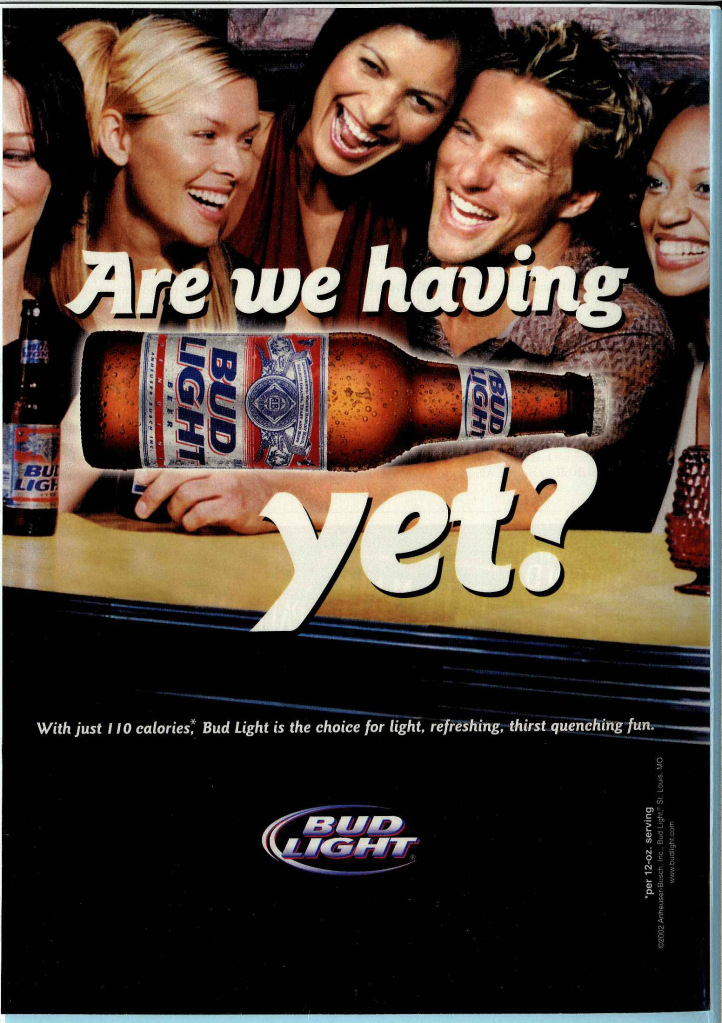The Alcohol Industry
The power of industry interference to stand in the way of sound alcohol policy should not be underestimated.
The power of industry interference to stand in the way of sound alcohol policy should not be underestimated.

Like the tobacco industry, the alcohol industry is dominated by a small group of transnational companies that control more than half of the world market. [25] Companies of this magnitude present a major challenge to governments seeking to implement evidence-based measures to prevent and reduce alcohol harm. [1] Their size allows considerable resources to be devoted, directly or indirectly, to promoting the interests of the industry.
The alcohol industry uses advertising to accomplish two main goals: to lure and recruit new customers and to normalize and promote alcohol use in new markets, thus increasing global consumption and profits. Stakeholder marketing and corporate social responsibility (CSR) programs also improve the industry’s standing with the public and policymakers and can avert efforts to regulate its activities. Alcohol corporations have massive marketing budgets, some of them higher than the GDPs of some low- and middle-income countries. Alcohol corporations have massive marketing budgets, some of them higher than the GDPs of some low- and middle-income countries - the six largest global companies spent $2 billion in 2010 on marketing. [50, 51]
Marketing also includes promotions and sponsorships that appeal to youth. The industry sponsors events geared toward youth, promoting events online with downloadable games and party invitations. [22] The industry also sponsors sporting events and teams. Significant increases in Budweiser’s market share in 2010 were attributed to its sponsorship of that year’s FIFA World Cup Tournament, [21] and this increase is expected again after the 2018 event.
Research has demonstrated that exposure to alcohol advertisements increases the likelihood, frequency and volume of alcohol consumption among youth. [1, 20] Alcohol advertisements also create false expectations about how alcohol will make people feel and be perceived by others [20]—advertisements promise what is important to young people: being happy, glamorous, successful, brave, mysterious, adventurous, fun, popular, sexy and hip. [15]
Young people are particularly susceptible to alcohol messages because they often lack the control, judgment and cognitive maturity to understand the sophisticated ways in which they are being manipulated by alcohol advertising. [1, 53] The evidence is strong: twelve studies, including over 35,000 people in several countries, all found a significant association between exposure to alcohol marketing among youth, some as young as 10 years old, and alcohol use. [53]
Alcohol advertisements are found where young people congregate: Snapchat, Facebook and Instagram. [22] Furthermore, online regulation has not kept up with media consumption trends. Industry codes restrict alcohol advertising to young people, but they are enforceable only for traditional media. Trends show increases in digital and online marketing by the alcohol industry each year. [52]

The industry aims to make alcohol use and consumption more socially acceptable among women, who consume less alcohol than men in most of the world.[1] This strategy has proven successful, and as a result, alcohol use by women, especially those of higher socioeconomic status, is catching up to alcohol use by men. [17]
Recent advertisements targeting women paint alcohol as a balm for the stress of raising children and dealing with modern life—encouraging women to spend their free time consuming alcohol on a night out with friends or after a busy day of work or parenting, promising fun and even a boost in confidence. [41] Where the use of alcohol among women is low, the industry is marketing alcohol brands to women using sweet flavors, such as cherry, or “healthier” options such as gluten-free and vegan, in order to make alcohol more palatable.
This shift in marketing to women is reminiscent of the tobacco industry. When the tobacco industry began targeting women, tobacco control advocates responded by warning that “women who smoke like men will die like men.”
But alcohol may have an even more negative effect on women. Women’s bodies are generally smaller than men’s, with more body fat and a different physiology that makes them more prone to brain, heart and liver damage from alcohol consumption.[1] Consumption of one drink per day increases the risk of cancer in women by as much as 10 percent. [54]

The industry says
It uses marketing and advertising to encourage brand loyalty.

The science tells us
Alcohol advertisements stimulate and encourage alcohol consumption, and attract new customers by targeting two groups in particular—women and young people.

Alcohol may have an even more negative effect on women's health.
Another creative marketing strategy employed by the alcohol industry is the corporate social responsibility (CSR), ranging from school-based “responsible drinking” programs for children to ride services for inebriated adults. These tactics have been found to have limited effectiveness for reducing alcohol harms [26, 55] but offer a very visible branding strategy. For example, Absolut Vodka used responsible drinking messages as a branding opportunity in its “Enjoy with Absolut responsibility” messaging [56]. The sincerity of these messages—e.g. Hennessy’s “Flaunt Responsibly”—has led researchers to characterize them as promotion strategies. [57]. “Drink responsibly” messages are also often placed at the bottom of the very ads that promise a long night of fun while consuming alcohol at a party, or other tempting appeals for young people.
Alcohol corporations also seek to partner with civil society to enhance their standing in the eyes of the public and policymakers. One example is the 2017 “Beers for Africa” campaign, which positioned alcohol as an aid against poverty. In a partnership between South African Breweries (SAB) and Stop Hunger Now SA, an international NGO, SAB promised that for every pack of beer sold, it would provide three students living in poverty with a meal [58]. Notably, after pushback from international public health advocates, the “Beers for Africa” campaign was terminated.

“What we want from Africa is [beer] volume growth that is above the world average.”
Another form of sponsorship or marketing the alcohol industry uses is known as “pink washing.” “Pink washing” uses the color pink on products, at events etc., in an attempt to appeal to women and/or show a company’s commitment to women’s issues. In the case of alcohol, the industry sponsors activities associated with breast cancer organizations and the search for a breast cancer cure. This practice is highly hypocritical, given the evidence linking alcohol consumption to an increased risk of breast cancer.[79]
It is crucial that governments, NGOs, academia and UN agencies acknowledge that the alcohol industry is proficient at creating halos around its brands. Activities to benefit development in one area can have ill-anticipated implications in others. Incompatible public-private partnerships, sponsorships and CSR “investments” often disguise tactics that discourage effective policy.
The alcohol industry’s marketing reach is expansive, especially in low- and middle-income countries, where advertising regulations may be limited or absent.
Globally, self-regulation is the most common method of regulation on alcohol promotion and sales, but voluntary codes have been shown to be of limited effectiveness.[7]
For instance, the industry has its own codes against marketing to youth, but alcohol advertisements often feature things youth are attracted to: cartoons, pop music, silly jokes, video games and flavors such as marshmallow or cotton candy.
A review of over 100 studies of voluntary industry codes across 20 countries from Australia to Ghana found that the alcohol industry did not follow its own codes in its marketing and advertising. [23] One study found that during the 2014 World Cup Tournament in Brazil, one of the most popular sporting events in history, 86 percent of alcohol advertising contained at least one violation of an industry code, such as promoting excess alcohol consumption.[21]

Marketing beer to women in Taiwan.

The industry says
Voluntary codes and guidelines and responsible alcohol campaigns can be used in place of regulatory policies.

The science tells Us
Voluntary codes, guidelines and responsible use campaigns are insufficient and not a substitute for legally enforceable measures.
“The alcohol industry “cannot sit at the table or have a voice when WHO defines its standards and preventive strategies, and it cannot supplant government’s role in formulating policies for alcohol control.”
In the late 1990s, several countries in Africa were found to have uncannily similar draft national alcohol policies that prioritized the protection of industry interests. Some of these drafts were found to be authored by alcohol industry representatives.[62]
Policies relating to unhealthy commodities such as sugary drinks, tobacco and alcohol are also those most likely to provoke opposition from these industries. Strong leadership is needed from governments to ensure that industry interference does not undermine development and implementation of evidence-based policies that can effectively reduce NCDs and other health burdens.

The Industry says
Alcohol problems can be solved only when all parties work together.

The science tells us
Cooperation with the alcohol industry takes the focus off the most effective interventions.
The alcohol industry understands the importance of how people talk about alcohol and works to frame how people think about alcohol with terms and campaigns such as these:
Alcoholism and Alcohol Abuse
Nonspecific terms describing harmful and excessive consumption of alcohol that are used to suggest that alcohol is only a problem when someone uses it to an extreme. The alcohol industry may use these terms to suggest that alcohol is only a problem when it involves people with clinical conditions. On the contrary, most health and social effects of alcohol are attributable to excessive use among people without clinical conditions.
Designated Driver
An intervention encouraged by the industry with the stated intent of preventing alcohol-impaired driving. These industry communications programs deliver the message that ingesting a lot of alcohol is not a problem as long as one driver has abstained.
“Drink Responsibly”/Responsible Drinking
An industry campaign that frames heavy and harmful use of alcohol as the responsibility of the individual and a person’s inability to control his or her consumption. This message, widely used by the industry, has not been found to be effective in preventing overconsumption.
Drunk Driving
An outdated term. "Drunk driving" is subjective, and the term helps foster the myth that individuals with impaired judgment due to alcohol use are still competent to drive a motor vehicle if they aren’t drunk. Research has found that alcohol has a "double danger" in that it impairs judgment at the same time that it reduces performance. Advocates now use the term "drink driving" instead.
Smart Drinking Goals
An initiative sponsored by alcohol giant Anheuser-Busch InBev that claims to change norms and behaviors around harmful alcohol use.
Problem Drinking and Alcohol Misuse
Nonspecific terms that put the blame on the user.
Voluntary Guidelines/Self-Regulation
Industry’s solution to alcohol policy which holds that the industry can regulate themselves, without the need for evidence-based governmental laws or regulations.
“In the view of WHO and many others, the formulation of alcohol policies is the sole prerogative of national health officials and regulatory authorities. Policies shaped by industry consistently fail to include those measures proven by the evidence and endorsed by WHO to have the greatest impact.”